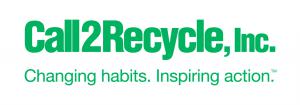Call2Recycle’s Charge Up Safety Campaign Spotlights Battery Recycling Safety
New Effort Aimed at Increasing Consumer and Collection Site Safety Awareness during Used Household Battery Collection
To address similar concerns presented by collecting used batteries for recycling, Call2Recycle®, Inc., North America’s first and largest consumer battery stewardship and recycling organization, has launched the Charge Up Safety campaign.
The objective is to raise the awareness of safe collection and shipping practices among those involved in the collection and shipment process, including consumers, municipalities, retailers, sorters, processors and Call2Recycle employees. Call2Recycle collects and recycles single-use and rechargeable batteries under 11 lbs. (5 kgs) and has diverted approximately 130 million lbs. (59 million kgs) from landfills during the past 21 years.
“Our #1 objective as an organization is the SAFE collection and recycling of batteries,” said Carl Smith, CEO and president, Call2Recycle, Inc. “We are launching Charge Up Safety to ensure that the importance of safety isn’t forgotten in our commitment to sustain the environment.”
Call2Recycle has launched a new safety portal, a one-stop hub of safety information on how to safely recycle and ship batteries. Collection site employees and consumers will be able to take an online training module that tests their battery handling knowledge. Instructions for handling damaged, defective and recalled batteries are also featured. Additional safety policies for collection sites, sorters and processors are being implemented. Organizations that do not follow the policies may be suspended or terminated from the program.
“As the volume and types of batteries in the marketplace expand, so do the risks for an incident,” said Smith. “Rechargeable batteries can hold a residual charge, and when they come into contact with another metal they can cause a spark, which can escalate into a fire or explosion. At the highest risk are the lithium ion rechargeable batteries found in many of today’s portable devices such as cellphones, laptops, tablets and power tools.”
“Preventing accidents can be as simple as educating people to take the time to simply bag or tape each battery prior to dropping it off in the recycling box or before a box is shipped,” said Smith. “Charge Up Safety is about continually assessing and enhancing our safety and compliance practices to ensure new safety policies are being embraced across our collection and recycling network.”
For more information on Call2Recycle and the Charge Up Safety initiative, visit our safety portal. Call2Recycle offers more than 14,000 public drop-off sites where consumers can recycle their batteries at no cost. Visit the locator to find the one closest to you.
About Call2Recycle, Inc.
Call2Recycle, Inc., is committed to protecting and preserving the environment through collecting and recycling consumer batteries and cellphones. Founded in 1994, the not-for-profit organization works on behalf of stakeholders to provide its battery recycling program to consumers across the U.S. and Canada. Visit call2recycle.org. Follow at Facebook, Twitter or LinkedIn.
Jess Gawrych
Environics Communications (US)
jess@environicsdc.com
(202) 296-2002
Emma McKay
Environics Communications (Canada)
emckay@environicspr.com
(416) 969-2796
Linda Gabor
Call2Recycle
678-218-1082
email us here
Legal Disclaimer:
EIN Presswire provides this news content "as is" without warranty of any kind. We do not accept any responsibility or liability for the accuracy, content, images, videos, licenses, completeness, legality, or reliability of the information contained in this article. If you have any complaints or copyright issues related to this article, kindly contact the author above.

